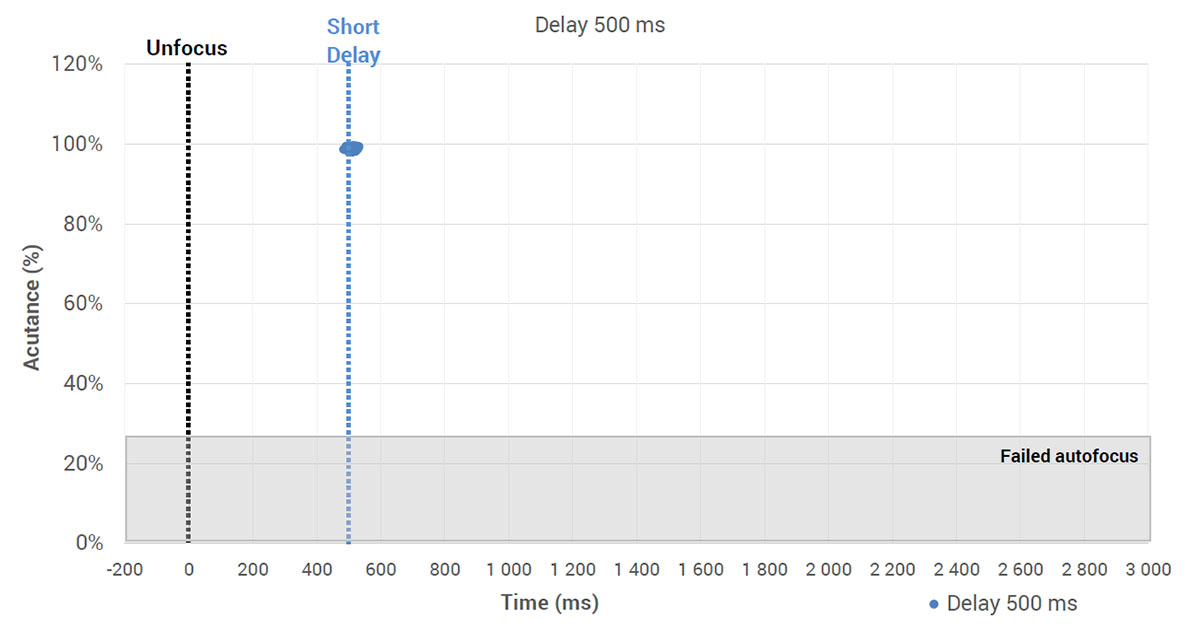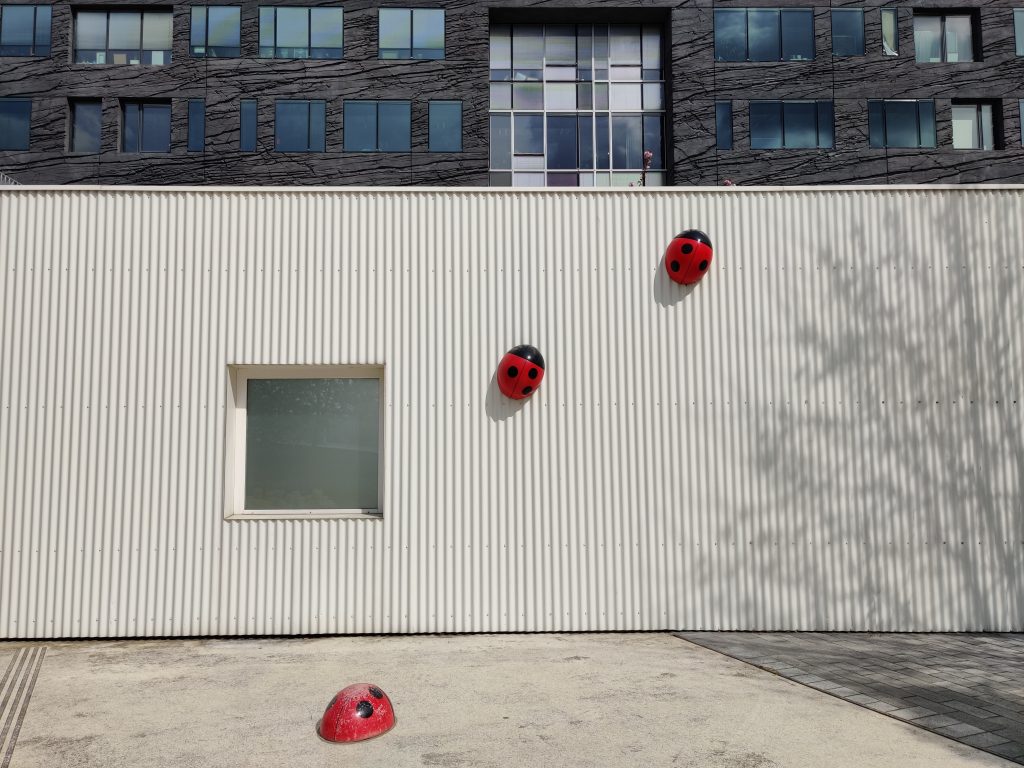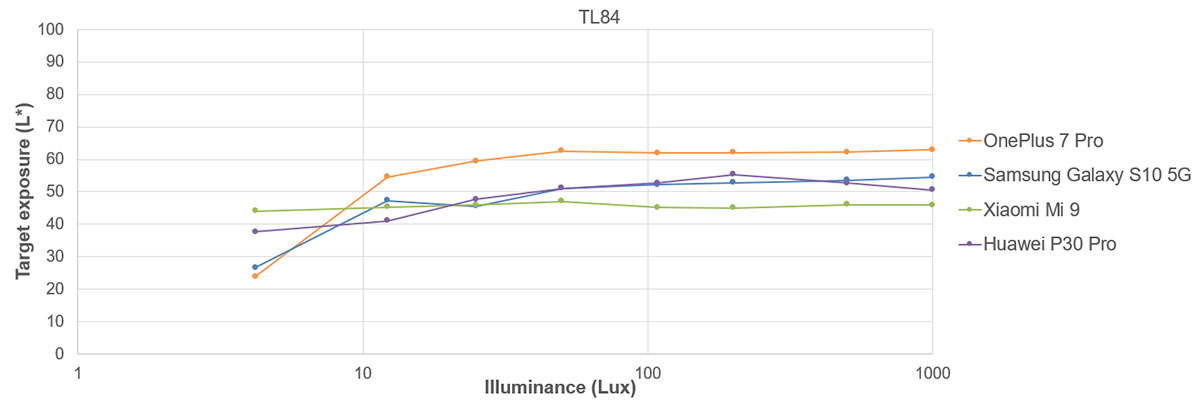Please note: In September 2019, we updated the DXOMARK Mobile test protocol to cover ultra-wide-angle performance and renamed the protocol DXOMARK Camera. We also expanded our low-light testing and created the new Night sub-score, which incorporates the previous Flash score. We have retested this device using the new Wide and Night test protocols and updated the scores in this review, but we have not changed the text from the original review. For more information, please see the articles about our new Wide and Night test protocols. Also have a look at the gallery below which contains a variety of Wide and Night shots for you to view and examine.


OnePlus 7 Pro camera review (originally published May 14, 2019)
Chinese manufacturer OnePlus has released a new flagship in the shape of the OnePlus 7 Pro. The camera in the new model ups the ante over its predecessor by packing a triple-camera solution with ultra-wide and telephoto lenses.
The primary camera utilizes Sony’s latest IMX586 48Mp Quad-Bayer sensor that combines the signal from four adjacent pixels into one for the final output. So the result is a 12Mp (4000×3000-pixel) resolution final image, but with the promise of improved color, detail, and dynamic range. The ultra-wide lens is coupled to a 16Mp sensor, and there’s an 8Mp sensor dedicated to zoom shots using the tele-lens.
Other features include optical image stabilization on the telephoto and main lenses as well as a combined laser and PDAF autofocus system. In video mode, the OnePlus shoots 4K video at default settings. Read on to discover the scores and the full analysis in our comprehensive review.
Key camera specifications:
- Triple-camera setup
- Primary: 48Mp Sony IMX586 sensor (12Mp output size), 26mm-equivalent lens with f/1.6 aperture and OIS
- Ultra-wide: 16Mp sensor, 17mm-equivalent lens with f/2.2 aperture
- Telephoto: 8Mp sensor, 78mm-equivalent lens with f/2.4 aperture and OIS
- Laser/PDAF autofocus
- Dual-LED flash
- 4K/60fps video (4K/30fps at default settings)
Please note: The camera firmware used for the DxOMark tests is not yet currently available to consumers. OnePlus will make it available as an over-the-air update before the end of the month.
About DxOMark Mobile tests: For scoring and analysis in our smartphone camera reviews, DxOMark engineers capture and evaluate over 1500 test images and more than 2 hours of video both in controlled lab environments and in natural indoor and outdoor scenes, using the camera’s default settings. This article is designed to highlight the most important results of our testing. For more information about the DxOMark Mobile test protocol, click here. More details on how we score smartphone cameras are available here.
Test summary
Achieving an overall DxOMark mobile score of 111 points, the OnePlus 7 Pro steps onto the podium with the third-highest score among the smartphones we’ve tested to date. Despite missing out on sharing the top spot with the Huawei P30 Pro and the Samsung Galaxy S10 5G by just 1 point, the OnePlus 7 Pro boasts excellent results in almost all of our sub-scores across both photo and video.
Its Photo score of 118 points is again just one point behind the Huawei P30 Pro, and with the exception of artifacts and zoom, the two devices achieve very similar scores. Exposures are excellent, with good contrast in all lighting conditions, and the OnePlus 7 Pro has a wide dynamic range that preserves both highlight and shadow detail in high-contrast scenes.
Color is outstanding and especially so in outdoor images in sunny conditions, where white balance remains neutral, and strong saturation delivers vibrant and bold hues that really pop. The texture-versus-noise trade-off is well-controlled, and despite a lower effective resolution compared to some recent devices, the OnePlus 7 Pro’s images pack plenty of detail. That’s especially true in outdoor or bright-light images, where intricate areas are well-defined and noise is barely visible. Of course, there’s some loss of texture in lower light conditions, and noise starts to become noticeable in dark parts of the image, but even so, the results remain among some of the best we’ve observed.
The same is true for the OnePlus 7 Pro’s bokeh simulation, which rivals the S10 5G and P30 Pro as one of the best Portrait modes we’ve tested. Depth estimation is good, with generally accurate subject masking, a pleasant blur gradient both in front and behind the portrait, as well as a natural look to the background blur, which boasts good shape and contrast to the spotlights.
For zoom shots, the OnePlus 7 Pro’s 3x tele-lens ensures excellent results at close range, and although at medium range noise is a little more prevalent and color slightly more desaturated than in standard shots, the level of detail is good. Image quality deteriorates quickly at long zoom distances, though, especially compared to the best-in-class Huawei P30 Pro with its periscope-style 5x tele-lens.
A solid set of results for video makes the OnePlus 7 Pro a versatile all-rounder, and its overall video score of 98 puts it up there with the top performers in our database. It really excels for fine detail preservation, thanks to its capture of 4K footage at default settings, and the good autofocus system means you can be assured of sharp, detailed videos. That said, the stabilization system is a little less efficient at reducing walking-induced camera-shake and artifacts than some competitors’ systems.
Video exposures are bright and punchy in the vast majority of cases, and although movies are a little dark in extreme low light, and dynamic range is slightly limited in high contrast conditions, these are minor quibbles about an otherwise excellent exposure system. Video color is rich and vibrant, especially shooting outdoors, and accurate white balance with smooth convergence under lighting or scene changes ensures accurate skin tones and neutral results generally.
Photo scores explained

Exposure and Contrast
OnePlus 7 Pro
94
Up there with the best flagship performers for exposure, the OnePlus 7 Pro delivers accurate exposures with good contrast in all lighting conditions. Target exposures were a little high in some of our lab measurements, but brightness is well-controlled in natural test scenes. The OnePlus 7 Pro is one of the best devices we’ve tested for dynamic range: in one of our most challenging high-contrast scenes, it preserves more detail in the highlights and shadows while still maintaining a good level of contrast compared to the equivalent P30 Pro and Mi 9 examples.
Exposures hold up well under indoor and low-light conditions, too. The OnePlus 7 Pro dropped some points for low target exposure on the face in our backlit indoor portrait, but indoor exposures are otherwise excellent.
In very challenging near-dark conditions of 1 lux, OnePlus 7 Pro images aren’t quite as bright as the best low-light devices such as the Huawei P30 Pro, but they’re not too far off and remain very usable.

Color
OnePlus 7 Pro
88
The OnePlus achieves a very good result for color that rivals some of the best devices we’ve tested. White balance is repeatable over consecutive exposures and accurate in outdoor and low-light images. A slight color cast is occasionally visible in indoor images, but it’s far from offensive, and color shading is well-controlled, so there are no unsightly color shifts from the center to edges of the frame.
Colors are vivid and pleasant in most tested conditions, and saturation is particularly strong in outdoor images, with more vibrant hues than some of the competition.
Fast, accurate, and repeatable autofocus in all lighting conditions is another excellent result for the OnePlus 7 Pro. In our series of benchmark tests in which we defocus the device between shots and wait a short or long delay before requesting focus, the device locked on quickly and delivered sharp images every time. The system worked well in all lighting conditions out on location, too, and we observed no autofocus failures during testing.

Texture
OnePlus 7 Pro
71

Noise
OnePlus 7 Pro
76
OnePlus 7 Pro images generally show good detail preservation, with only the very finest details lost in both outdoor and indoor images. In static images (no subject movement), it recorded extremely consistent acutance scores of around 80% under lighting levels between 20 to 1000 lux, so the loss of detail starts to become very noticeable only in very low light. Fractionally more fine detail is present in the iPhone XS Max and Huawei P30 Pro images, which both score very slightly higher than the OnePlus 7 Pro as a result, but you’d really need to “pixel peep” to see any differences among them.
The OnePlus 7 Pro handles the texture-versus-noise trade-off well, too, placing it once again towards the top of our database for denoising. In outdoor images, areas of uniform color such as a clear blue sky as well as shadow areas are clear of any luminance noise. Indoors, slightly more noise is visible in the darker parts parts compared to the best examples we’ve seen, but it’s not overly concerning and only really visible at close inspection.
Despite some loss of fine detail in low light (20 lux), texture and denoising continue to hold up well against top performers like the Huawei P30 Pro, so you can be assured of well defined files in all conditions.
The new OnePlus achieves a joint top score for flash alongside the Huawei P30 Pro, with outstanding results in both our flash-only and mixed lighting tests. In both instances, exposure and white balance are accurate. There is some visible corner shading, but it’s reasonably well-controlled and noise is kept low. Some fine details are lost in the facial details of the portrait, but the level of texture present remains fairly good.

Artifacts
OnePlus 7 Pro
84
There are very few inherent artifacts that seriously distract from the quality of the OnePlus 7 Pro’s images; we applied the biggest penalties for loss of acutance towards the edges of the frame as well as for ringing, which can appear as a halo effect along high-contrast edges. We applied other minor penalties to the score for corner shading, for visible maze and moiré effects in high-frequency patterns, and for some cyan shift in skies. Even when visible, however, these issues aren’t overly detrimental to overall image quality, so we deducted very few points in our perceptual analyses of our natural test scene images.

Zoom
OnePlus 7 Pro
71
The OnePlus 7 Pro is a top performer for zoom. The 3x telephoto lens (78mm-equivalent) ensures good results in medium-range zoom shots, which hold up well in indoor and low-light conditions, with good detail preservation. However, while detail is comparable to the P30 Pro at medium range, and although ringing is well-controlled, luminance noise is usually visible in OnePlus 7 Pro zoom shots.
Things deteriorate somewhat at long-range zoom distances, when the OnePlus 7 Pro’s digital zoom processing starts to kick in. Detail drops off at long-range distances, which is visible especially when compared to the P30 Pro in the samples below. (This can be at least partly attributable to the fact that the OnePlus zoom produces 12Mp images up to a 3x zoom level, but drops to an 8Mp resolution beyond that.) In addition, a fine luminance noise is generally visible in outdoor conditions, as well as occasional color desaturation; in other words, you’d do well to stick to medium range for the best zoom results from the OnePlus 7 Pro.

Bokeh
OnePlus 7 Pro
70
A good Portrait mode that blurs the background to help isolate the main subject is one of the more desirable features for modern smartphone photographers. Once again the OnePlus 7 Pro implements a very effective solution, and its score of 70 points is among the best we’ve awarded. Spotlights in the background have good shape and contrast, and the effect produces a pleasant blur gradient that realistically blurs the foreground and background at different depths to achieve something of an optical-lens effect.
Depth estimation works well and the OnePlus 7 Pro masks the subject very accurately in outdoor images, where it keeps complex areas such as hair sharp and well-defined. Some minor depth artifacts or masking errors are visible in indoor images, with the edges of the portrait slightly blurred, but all-in-all, the mode does an admirable job.
Video scores explained
With an overall score 98 points, the OnePlus 7 Pro comes very close to the top performers for video, just behind the Samsung Galaxy S10+ 5G with 100 points and the Xiaomi Mi 9 with 99. The overall video score is derived from performance and results across a range of attributes in the same way as the Photo score: Exposure (86), Color (89), Autofocus (95), Texture (77), Noise (76), Artifacts (74), and Stabilization (91).
With excellent scores across the board, the OnePlus 7 Pro is a consistent performer for video as well as for photo, making it a solid all-rounder for multimedia creative types. Results for video exposure are very close to the best, with some slightly bright but acceptable target exposure measurements recorded in our lab analysis in most light conditions. The OnePlus 7 Pro’s exposure isn’t quite as good in extremely low light (5 lux) compared to the Xiaomi Mi 9 and the Huawei P30 Pro, but footage remains usable even in these challenging conditions.
Dynamic range is slightly limited compared to the Apple iPhone XS Max’s, which is our top-ranked device for video exposure thanks to its more effective HDR processing. So in bright and high-contrast conditions, expect to see a little clipping in the brightest highlights, but otherwise the OnePlus 7 Pro delivers some really nice video exposures.
Video color is also very good, with pleasant rendering and vivid and well-saturated hues in most movie files. As you can see from the lab measurement chart below, underexposure in extremely low light (5 lux) reduces saturation, but otherwise color pops nicely. In fact, in our natural test scene analysis, color is noticeably richer in the OnePlus 7 Pro videos compared to the iPhone XS Max and Samsung S10+ files.
White balance is good as well, with generally accurate results in both outdoor and indoor movies, as well as fairly smooth adaptation under changing lighting conditions.
The 4K video files ensure excellent results for texture and fine detail preservation, with outstanding acutance scores of over 90% in both outdoor and indoor movies, putting it ahead of the other top-performing devices for video texture. Detail isn’t quite as impressive in very low light (5 lux), but the OnePlus 7 Pro still holds its own against such top performers as the Huawei P30 Pro in darker environments, and in bright light, it’s a cut above.

The OnePlus 7 Pro handles noise well generally, achieving good scores in our perceptual analyses of natural test scene videos both outdoors and indoors. However, with respect to moving elements, the OnePlus 7 Pro’s denoising algorithm struggles to be effective. The result can be somewhat distracting on playback, with a more obvious buildup of noise on moving subjects compared to static areas.
Video autofocus is excellent, however, with scores up there with the best performers. It works well in all lighting conditions, with good reaction times ensuring quick lock-on, and accurate tracking capabilities for keeping things sharp as the camera or the subject moves. Stability during scene changes is good, but the OnePlus 7 Pro’s stabilization system isn’t quite as effective as the best solutions we’ve tested, especially when correcting walking motion. A slight jello effect, a difference in sharpness between frames, and some frame shifts are noticeable in a few videos, so its performance in this regard doesn’t quite measure up to that of such top performers as the Huawei P30 Pro and the iPhone XS Max.
Conclusion
The competition to deliver outstanding smartphone image quality shows no signs of abating, and with its latest flagship device, OnePlus has taken a significant step forward. The triple-camera solution offers great versatility for photographers, and although the ultra-wide camera currently falls outside the scope of our testing and scoring, it’s great to see such options included. Image quality is excellent for the main and tele cameras in almost all the categories we evaluate, which has ensured the OnePlus 7 Pro a spot among the top three in our database. With great scores across almost all test categories, you can be assured of outstanding photos and videos from the OnePlus 7 Pro in almost any situation.
Photo pros
- Accurate target exposures and wide dynamic range
- Fast, accurate, and repeatable autofocus
- Well-preserved detail in all conditions
- Good detail in medium- and long-range zoom shots
- Accurate exposure and minimal corner shading using flash
- Effective depth estimation and nice bokeh effect in Portrait mode
Video pros
- Well-preserved detail in all conditions
- Accurate target exposures in most conditions
- White balance is generally accurate
- Fast autofocus response with scene changes
- Fairly effective stabilization
Photo cons
- White balance casts are sometime visible
- Visible luminance noise in the shadows in indoor images
- Slightly low target exposure on backlit portraits
- Desaturated color and luminance noise in zoom shots
Video cons
- Differences in frame sharpness in walking videos
- Coarse noise on moving subjects in low light
- Strong aliasing
- Slightly limited dynamic range
































































































DXOMARK encourages its readers to share comments on the articles. To read or post comments, Disqus cookies are required. Change your Cookies Preferences and read more about our Comment Policy.